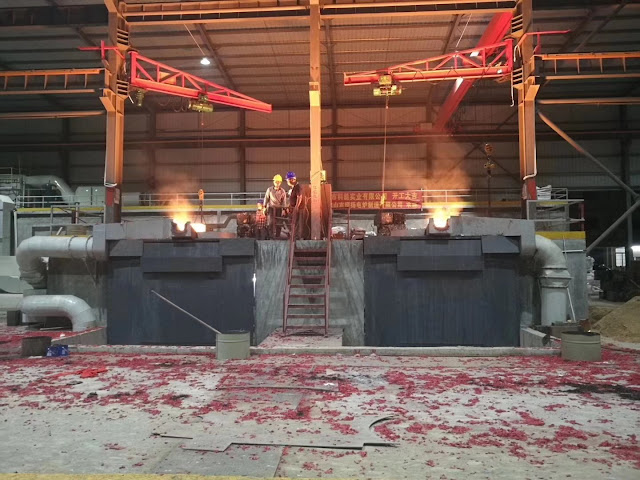Induction Furnace Voltage
The induced voltage of the intermediate frequency furnace often exists on the inductor coil, the furnace mouth plate, the water-cooled guide rail, and the furnace body bracket.
So, what is the reason for the induction voltage of the induction furnace? Next, we will talk about the induced voltage of the intermediate frequency furnace.
When the induction coil of the intermediate frequency furnace is working, when an alternating current passes through the coil, an alternating magnetic field is established in the space around the coil. An induced electromotive force is generated in the metal blank in the alternating magnetic field.
We often regard the blank as a closed circuit with only one turn of the coil. When the induced electromotive force is generated, an alternating self-circulating circulating current—eddy current is generated in the circuit.
Induction heating is to use the heat energy generated by this eddy current to heat the metal blank.
The water-cooled guide rail of the intermediate frequency furnace and the billet are in the same alternating magnetic field.
Of course, the induced electromotive force can also be induced, but it is only affected by its shape (hollow slender tube) and material (non-magnetic austenitic stainless steel).
Compared with the blank, the induced electromotive force can be ignored in the heating process.
The furnace mouth plate of the intermediate frequency furnace can also induce induced electromotive force, but it is not the main magnetic flux that induces the electromotive force, but the leakage magnetic flux.
The reason why copper is used to making the furnace mouth plate is that the resistivity of copper is much smaller than that of steel. In this way, the electromotive force generated by the magnetic flux leakage on it acts on the resistor, and the heat loss caused by the resistor is also small.
The furnace mouth plates located at both ends of the inductor can be equivalent to single-turn short-circuit coils respectively.
Its function is similar to the short-circuited coil closed up and down the induction coil of the intermediate frequency melting furnace (some manufacturers put the closed single-turn short-circuit coil cooled by water into the furnace cover and bottom with refractory materials).
This short-circuit coil is also called a Ferrari short-circuit ring.
The above is the induction voltage generation process of the intermediate frequency furnace.
Free send inquiries to stella@hanrm.com or inquiry99@hanmetallurgy.com if any needs.
Email: stella@hanrm.com Or stellarollingmill@gmail.com inquiry99@hanmetallurgy.com
Whatsapp/Wechat:+8615877652925
Website: https://www.hanmetallurgy.com

评论
发表评论